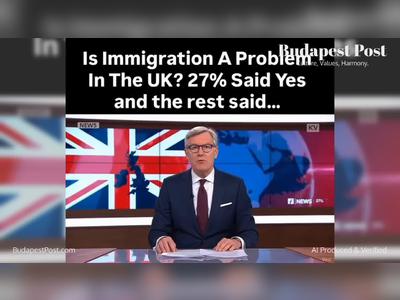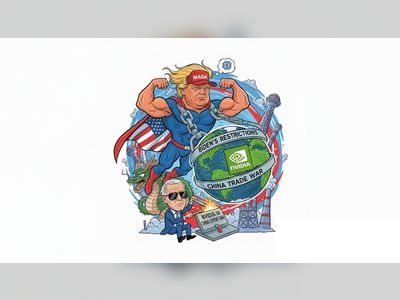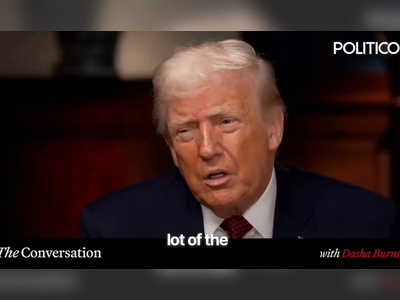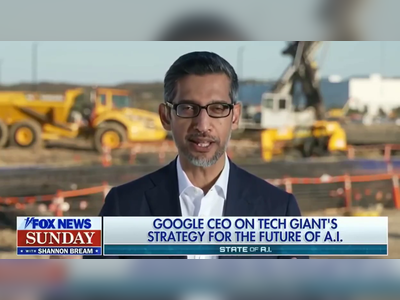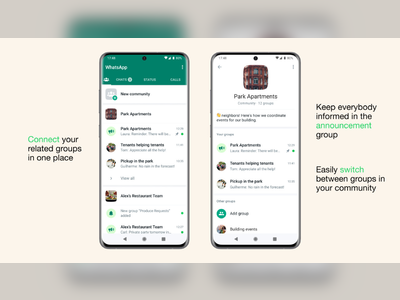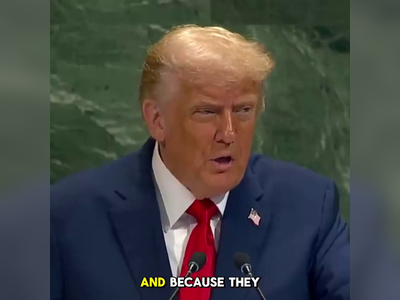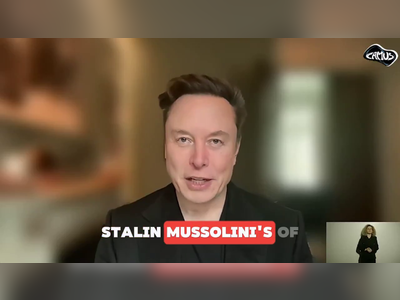
Microsoft paid $26 billion for LinkedIn, then mostly left it alone - and CEO Jeff Weiner is good with that
LinkedIn has done some things to integrate with its parent, and more tie-ins are coming.
Microsoft told investors what it could do with LinkedIn in a PowerPoint presentation it showed on the day the $26.2 billion deal was announced. It was June 13, 2016.
Some of those ideas have been implemented since the deal was finalized, three years ago this month. Others are still on the way, LinkedIn CEO Jeff Weiner told CNBC in an interview this fall at his office in Sunnyvale, California.
He turned to the Microsoft Surface Studio PC on his desk, brought up Microsoft’s Outlook email service in a browser window and then, with a few clicks, accessed information from LinkedIn about people with whom he had exchanged messages.
“It’s a really powerful way to just stay in touch and to just understand who’s reaching out and what they’re up to,” said Weiner, who became LinkedIn’s CEO in 2009, a year after joining the company from Yahoo.
Although that integration exists on the web and in Outlook’s iOS app, other promises have yet to materialize, such as an “Intelligent Newsfeed” in LinkedIn that draws from information in Office apps, and tools for managers to understand what their employees are doing at work.
The slowness points to Microsoft’s current desire to not screw up its biggest acquisition yet, suggesting a change in approach under CEO Satya Nadella.
Microsoft has had acquisitions go wrong in the past.
In 2012 Microsoft announced a $6.2 billion write-down of goodwill that was mostly related to aQuantive, a digital advertising company it had bought for $6.3 billion in 2007 in its biggest transaction yet at the time. Microsoft posted its first-ever quarterly loss as a result of the write-down.
Microsoft also reported a quarterly loss in 2015 after announcing $8.3 billion in charges tied to the restructuring of its phone hardware business, following Microsoft’s $9.5 billion purchase of Nokia Devices and Services business.
Both of those deals were signed before Nadella replaced Steve Ballmer as CEO in 2014.
“Of course, we’ll learn from the past,” said Nadella about LinkedIn — he spoke from experience, as one of the executives responsible for Microsoft’s advertising push following the close of the aQuantive deal.
Amy Hood, Microsoft’s finance chief, said the main goal of the acquisition was to accelerate growth at LinkedIn, as well as the Office 365 and Dynamics 365 product lines.
As part of the deal, LinkedIn got to retain its independence and Weiner remained in charge. Weiner received a spot on Microsoft’s senior leadership team and started reporting directly to Nadella, while keeping his CEO title.
“Satya has made good on every single thing we talked about prior to the acquisition,” Weiner said.
Microsoft took a somewhat similar approach with its $7.5 billion acquisition last year of code-sharing service GitHub, emphasizing that it would run independently. It tapped Nat Friedman, formerly CEO of mobile development start-up Xamarin, which Microsoft bought in 2016, to run GitHub, as GitHub had previously said it was looking for a new leader.
On the day the GitHub acquisition was announced, Friedman said Microsoft technologies would come to GitHub’s marketplace, while GitHub would bring new capabilities to Microsoft’s Visual Studio Code text editor.
A long time horizon for integration
LinkedIn was a special asset. Salesforce also wanted to buy it, and a months-long bidding war ensued. Following the loss, Salesforce CEO Marc Benioff suggested Microsoft’s plans to bundle LinkedIn data with other products were anticompetitive.
Three years after the deal closed, Benioff’s worst fears have not come true. By and large, LinkedIn still operates as a separate entity from the rest of the company.
But Weiner says it’s still early.
“We have a members-first approach,” he said. “So it’s all about making sure we’re maintaining the trust of our membership. Microsoft has a very similar ethos with regard to how they secure the data of their customers, and just being very thoughtful in terms of the right way to roll this out and make sure that we create the right experience. So there’s just been a lot of testing happening.”
Potential integrations were definitely part of Microsoft’s original pitch for buying the company. The presentation featured six “illustrations” of the two companies’ products coming together:
A connection between LinkedIn’s Sales Navigator and Microsoft Dynamics sales software. This technology is available, and teams have enhanced the connection between the services. People can also use Sales Navigator data in Microsoft’s PowerApps and Power BI tools.
A unified professional profile that would show LinkedIn details in Windows and Office applications. Microsoft has made inroads here, and the LinkedIn integration will be coming to the Outlook app for Android in 2020.
An “Intelligent Newsfeed” in LinkedIn that draws on activity from Microsoft Office apps. This isn’t available today, although LinkedIn has tapped Microsoft services such as translation to enhance the feed.
Microsoft’s Cortana virtual assistant telling users about relevant LinkedIn information. This isn’t available today.
Tools that managers can use to better understand employees’ work activity. This isn’t available today.
LinkedIn Learning content inside Office applications. This isn’t available today, but Weiner said bringing Learning content to Office apps “feels like it makes a lot of sense.”
In addition, during a CNBC appearance alongside Nadella on acquisition day, Weiner mentioned several Microsoft products that it would be “incredibly exciting” to integrate with, including Active Directory and Skype. To date LinkedIn has not touted integrations with those things.
During that appearance, one Microsoft product Weiner didn’t talk about integrating with was the Azure public cloud, which competes with market leader Amazon Web Services. Earlier this year, though, LinkedIn said it would adopt Azure after depending on its own infrastructure for years.
The move to Azure could enable additional integration points.
“We’re going to be building out an infrastructural capability on Azure so that Microsoft customers, in a private, in a secure, in a trusted environment, are going to be able to leverage LinkedIn data relevant to their employees with their own data as an organization,” Weiner said. “And when you start to commingle that data, it becomes more valuable. So organizations will be able to run analysis and queries, and there’s some really interesting things that can be done on that front.”
Internally, Microsoft recently deployed a new version of its corporate directory, called Who Plus, that draws on LinkedIn, Weiner said. LinkedIn could turn that integration into a product for non-Microsoft employees to use, he said.
Weiner said LinkedIn profile information will become available in more of Microsoft’s Outlook applications, including the Android app. And LinkedIn can improve the existing Outlook integrations.
“Once we’ve nailed that, we can potentially expand that into other Office applications, especially as Office continues to grow its collaborative capabilities -the ability to see who you’re talking to, who you’re contacting, who’s reaching out to you, who you need to reach out to by virtue of their skills, their knowledge, etc. I think that can create a lot of value for folks,” Weiner said.
Weiner said the team is still thinking about how to integrate LinkedIn more into Windows, which is one of the less prominent possibilities Microsoft originally pointed to in its 2016 presentation to investors. He talked about enabling the right kind of news experience and delivering “active notifications.”
Little change but steady growth
So far, though, LinkedIn doesn’t appear to have changed all that much for end users. But it might not need to.
LinkedIn is still growing its user base -there are now 660 million members, up 52% from when Microsoft bought it -and LinkedIn contributed $6.75 billion in revenue in the 2019 fiscal year (which ended June 30), up 28.4% on an annualized basis. Although revenue growth hasn’t exploded under Microsoft, ranging between 25% and 37% since 2018, growth was slowing down significantly when Microsoft bought it.
Weiner says its performance is ahead of plan for the last three years.
“One thing I know is that by virtue of becoming a part of Microsoft, we were almost immediately able to focus increasingly on a longer-term horizon, and not be as focused on the immediate term, on the quarter-to-quarter performance,” he said. “At the time of the close and shortly thereafter, at least for the first couple of quarters, our growth continued to decelerate. It was a couple of quarters later that it started to stabilize. And then it started to meaningfully accelerate.”
He continued, “So, if we were still public and there was that deceleration, what kind of response would we have seen from the Street? How would that have impacted the company? How would that have impacted our talent? It’s hard to say. But -didn’t happen, so don’t spend a lot of time thinking about it.”
LinkedIn also hasn’t done much for Microsoft’s bottom line. In its fiscal year ended June 2018, Microsoft said that LinkedIn’s fiscal-year operating loss widened by $63 million to $987 million -a drop in the bucket compared with Microsoft’s overall net income of $16.57 billion that year. The company didn’t provide an update on LinkedIn’s profit or loss this year.
Weiner said LinkedIn could improve its profitability by modernizing its billing infrastructure.
The LinkedIn and Microsoft sales teams could also work more closely.
“I think there’s opportunities to do that where we have a different customer set and different customer relationships, where Microsoft can potentially open doors by virtue of their relationships,” Weiner said.
